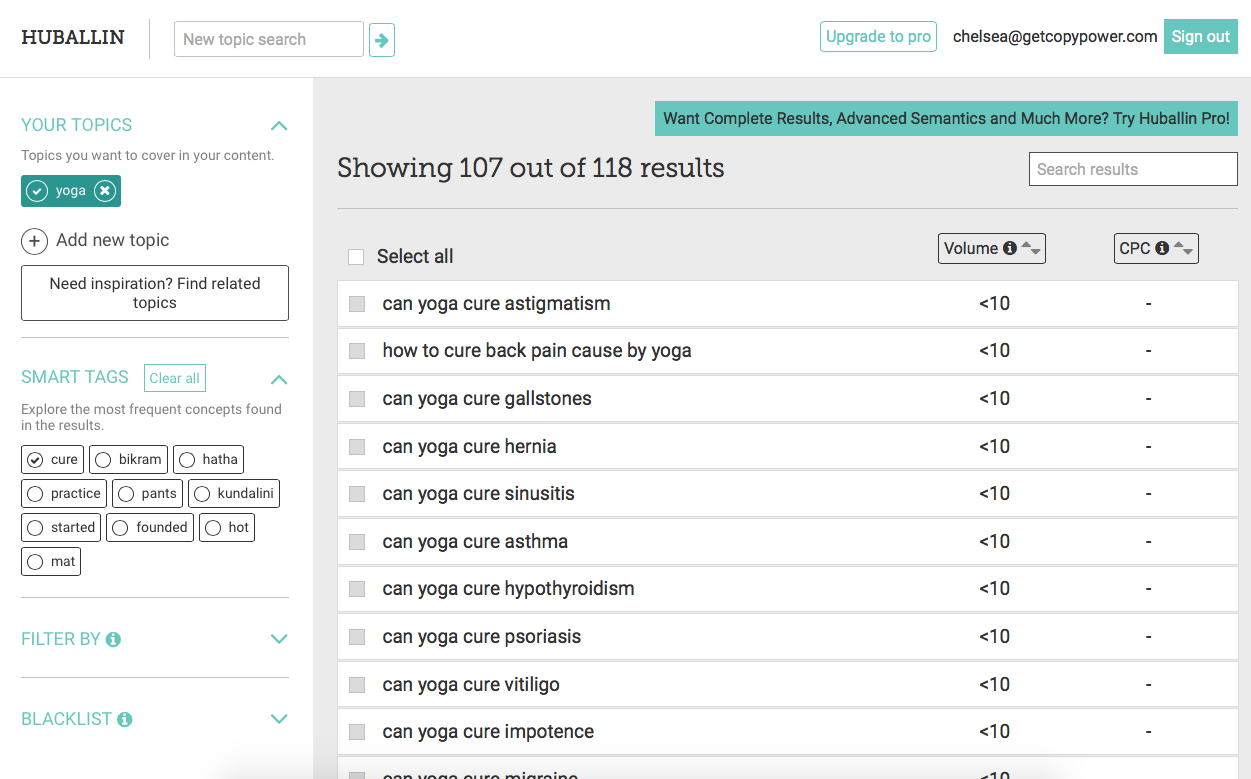How to Know What the Heck You Should Write About On Your Company Blog written by Amy Metherell read more at Duct Tape Marketing
I’m guessing the goal of your company blog, like anything you spend effort working on, is to boost your business, brand awareness, and sales.
Which all sounds very nice in theory, until you get into WordPress, click on “Add Post”, find yourself starting at the blank editor screen not knowing what the heck to write about.
A company update? A new feature you’ve added to your product? Something you’ve been musing on lately? A tutorial on how to use your product? A case study? A new testimonial a happy client just sent in so you can prove that your product really is the best?
How to Rationally Decide What to Write: Reader Intent + Traditional SEO
To help yourself decide, think about the backend and functional purposes your blog serves for your website.
It’s a place where you write. Lots of words. And search engines are going to crawl those pages to find out what your website is about so they can know who they should show you to in their searches.
So, though you might send out your blog updates to your current email list, a big purpose of your blog is to fulfill the information discovery need… and to do it better than your competitors. (Which may or may not be very difficult, depending on your nice.)
So if organic traffic and new customers are what you’re after (which I think is the case for most DTM readers), it only makes sense that you’ll write about the topics your target audience is searching Google to find more information about.
You may already know what keywords your audience is searching with, especially if you’ve got a particularly robust PPC campaign. But even if you don’t, a few hours or less of research will give you a handful of keywords that’ll be a great place to start. (This quick start guide will take you less than an hour.)
How Reader Intent + Traditional SEO Tie Into Better Overall SEO
Rand Fishkin has a presentation called SEO in a Two Algorithm World where he talks about why these two elements are so crucial to a good content (read: company blogging) strategy.
Word-based SEO is the traditional kind where the words you use on pages and in your meta descriptions tell the search engines what your post and your website is about. This is one algorithm search engines track for reader benefit and relevancy.
The other algorithm is on-page SEO or the data the search engine gets from how people interact with your site once they click through. Do they bounce quickly? Scroll all the way to the bottom slowly? Click to another page on your website?
This second algorithm is about engagement. Which is why it’s so important to write about what people want to know… because if you give that to them, they’re much more likely to stick around and interact with you more—boosting both your sales and your SEO scores.
Generating Title Ideas That’ll Get the Results You’re After
With your list of keywords in hand (sounds cheesy), all you need is a few resources to help you take those keywords from representations of broad topics into blog post titles that your targets will see and want to read immediately.
Four of my favorite resources to recommend include:
1. Huballin
This is a free, online software in beta that helps you narrow down potential blog post titles based on the topic you enter and keywords you select that are popularly associated with it.
For example, if I enter the topic “yoga” and select the “cure” smart tag it suggests, I get a whole list of quality titles I can write on like:
- Can Yoga Cure Astigmatism?
- How to Cure Sinusitis Through Yoga
- Can Yoga Cure Lower Back Pain?
Pure gold, if you ask me.

2. Digital Marketer’s Headline Swipe File
The idea of a headline swipe file is to have something to refer to for ideas when your brain isn’t working or you just don’t want to do the thinking yourself.
The headlines in this swipe file are focused specifically around getting more attention on social media, which can be incredibly useful if you use social media as an effort to reach your target market.
For example, here’s one of their headlines for you to personalize & “swipe”:
“How [impressive number] Got [desired result] in [time period]”
Hint: That “desired result” is more than likely going to be one of your keywords.
3. 101 Headline Formulas
This document (along with the one from Digital Marketer) is based around the idea that effectiveness in a headline can be boiled down to a few core formulas that you can plug information directly into, rather than them being subjective pieces of art.
And they’re not wrong.
With headline formulas like “How to [blank] Even if [blank]” or “Don’t Screw Up Your [blank]! 8 Most Common Mistakes”, it’s easy to plug your keywords in and get content that’s the perfect storm of everything you’re after: SEO-friendly, useful, and sharable.
4. HubSpot’s Blog Topic Generator
This tool by HubSpot is pretty straightforward: enter three nouns on your keyword list and get a week’s worth of useful blog topics in return. (For the most part, it isn’t perfect.)
Inspired by this post, I entered business blog, SEO, and content marketing. These were the results I got:

Not bad, eh?
Write & Schedule Your First Post
After you know what keywords you want to target and have picked out your first title, write your first post and publish it.
It probably won’t be perfect (especially if you’re new to blogging), but don’t let that worry you. The important thing is that you get started with content that will be found by search engines and useful to your target audience.
 Chelsea Baldwin is the founder of Copy Power, where she helps companies maximize their online sales and marketing funnels via content that stands out from the crowd and turns readers into devotees. Her ebook offers a five-step DIY guide for non-writers to maximize the impact of their on-site sales copy.
Chelsea Baldwin is the founder of Copy Power, where she helps companies maximize their online sales and marketing funnels via content that stands out from the crowd and turns readers into devotees. Her ebook offers a five-step DIY guide for non-writers to maximize the impact of their on-site sales copy.
from Blog – Duct Tape Marketing http://www.ducttapemarketing.com/blog/what-you-should-write-about-on-your-blog/
via IFTTT

No comments:
Post a Comment